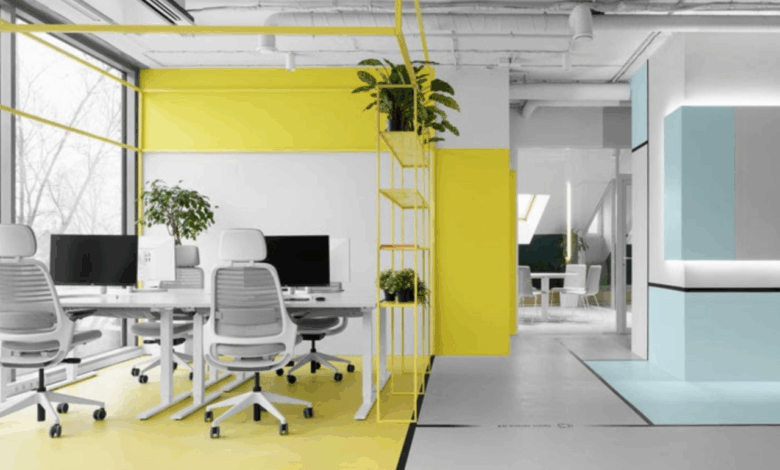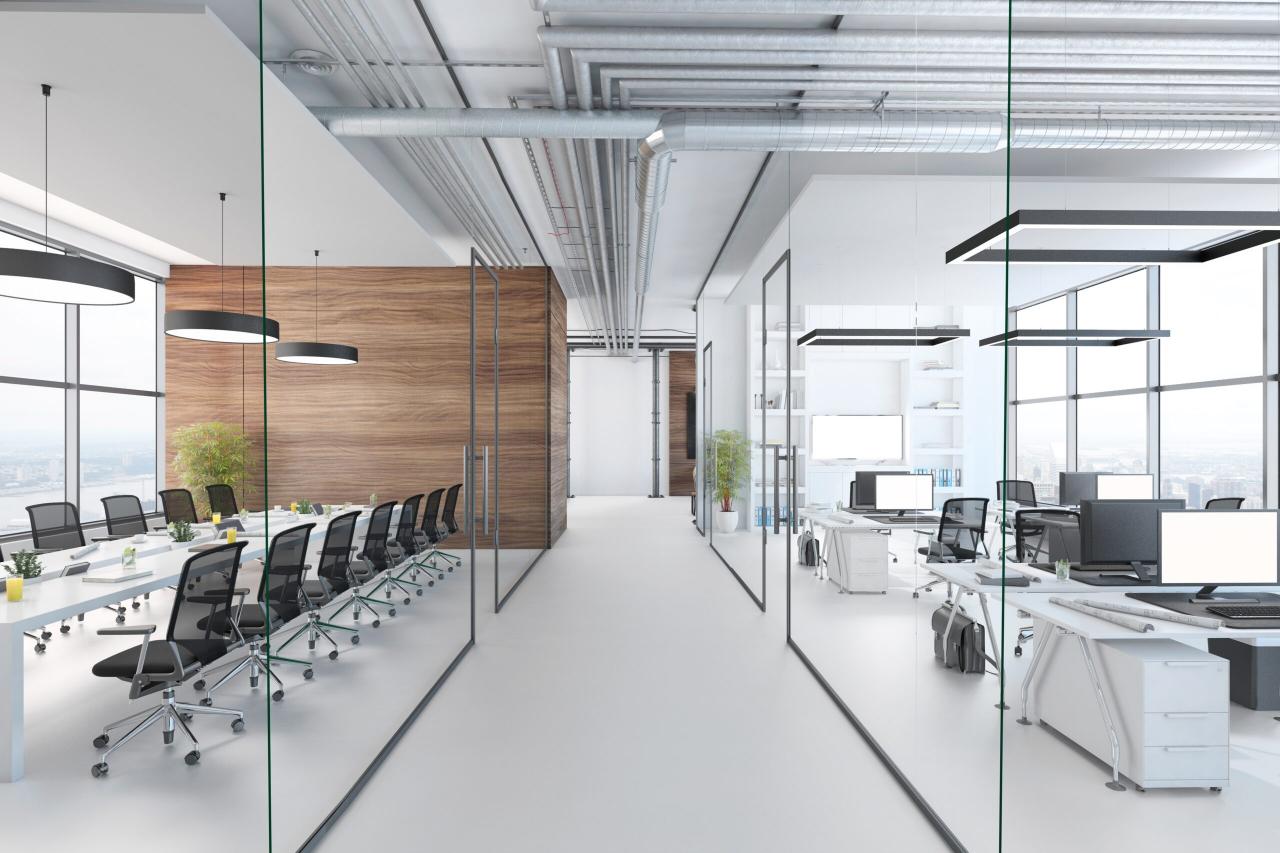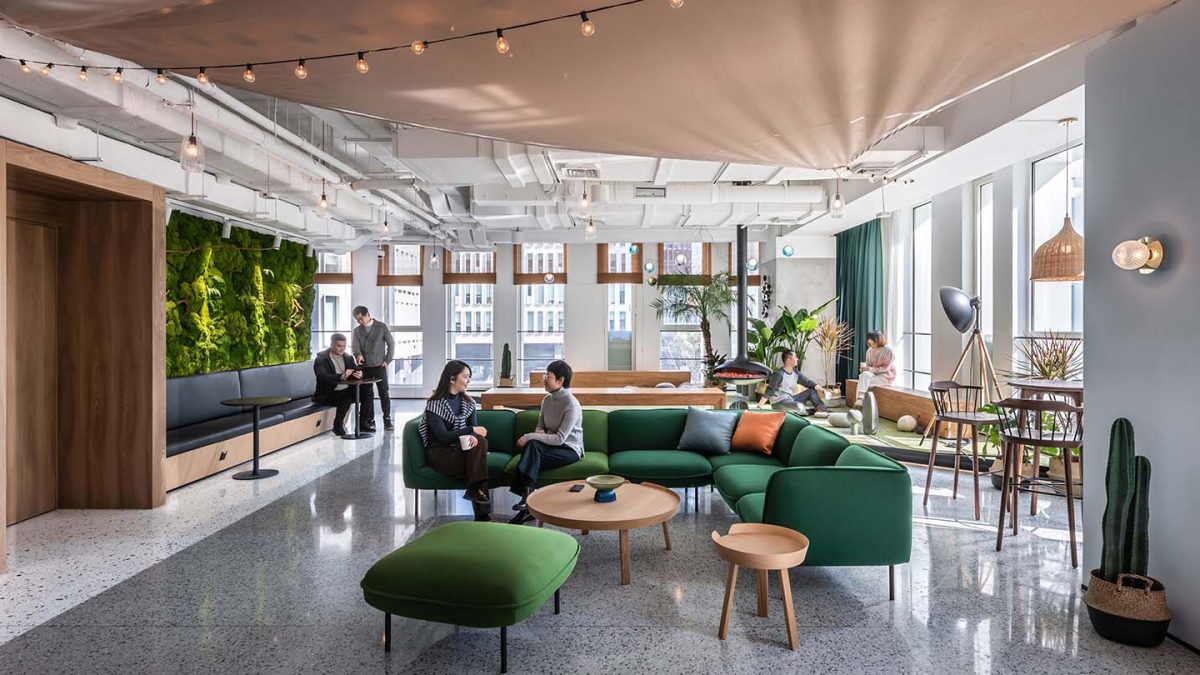The Future of Office Space Design Prioritizes Collaboration

The traditional office, a cornerstone of corporate life for over a century, is undergoing a profound and irreversible transformation. The rigid, cubicle-filled spaces of the past are being replaced by a dynamic, flexible, and human-centric model that prioritizes collaboration, well-being, and adaptability. This isn’t just about a temporary shift to remote work; it’s a fundamental revolution that is reshaping how, where, and why we work. This article will take a deep dive into the core concepts of the future of office space, exploring the pivotal role of technology, the new design principles defining the modern workplace, the rise of a new workforce, and the immense opportunities and challenges that lie ahead for businesses and individuals alike.
The New Purpose of the Office

The physical office is not dying; it is evolving. Instead of being a mandatory destination for a 9-to-5 workday, the office is becoming a strategic hub for specific activities. Its new purpose is to foster social connection, collaboration, and a sense of shared purpose that is difficult to replicate in a virtual environment.
A. The Hybrid Work Model
The most significant change in the modern workplace is the widespread adoption of the hybrid work model. This model provides employees with the flexibility to work from home for a few days a week and to come into the office for specific collaborative tasks. This provides the best of both worlds: the flexibility of remote work and the benefits of in-person interaction.
- A Hub for Collaboration: The office of the future will be a destination for workshops, brainstorming sessions, and team-building activities. It will be a place for a team to connect, to share ideas, and to build a sense of camaraderie that is crucial for a strong company culture.
- The “Third Space”: The rise of co-working spaces and cafes as a “third space” for work will continue to grow. These spaces offer a flexible, low-cost alternative to a traditional office and provide a new way for independent professionals and remote workers to connect and collaborate.
- A Tool for Talent Retention: The hybrid work model is no longer a luxury; it’s a necessity. Companies that offer a flexible work model are more likely to attract and retain top talent, particularly from a new generation of workers who prioritize work-life balance and a sense of autonomy.
This new model is a fundamental rethinking of the role of the office, moving it from a place of work to a place for connection.
B. The New Office Design
The physical design of the office is a direct reflection of its new purpose. The rigid, cubicle-filled spaces of the past are being replaced by a dynamic, flexible, and human-centric model that prioritizes a person’s well-being and a sense of belonging.
- Activity-Based Working (ABW): This is a design philosophy that provides employees with a variety of spaces to work in, from a quiet, private booth for a focused task to a large, open table for a collaborative meeting. The idea is to give an employee the freedom to choose a space that is best suited for their specific task, which can increase productivity and creativity.
- Biophilic Design: The integration of natural elements into an office’s design, such as green walls, indoor plants, and an abundance of natural light, is a new and powerful trend. Biophilic design has been shown to reduce stress, improve cognitive function, and increase a person’s sense of well-being.
- Smart and Adaptable Furniture: The new office furniture is designed to be smart and adaptable. This includes desks that can be raised or lowered with the touch of a button, chairs that can adjust to a person’s posture, and a wide range of mobile and modular furniture that can be reconfigured to suit the needs of a specific task.
The Technological Catalyst
At the heart of the future of office space lies technology. The tools that once connected us are now the very foundation of how we collaborate, innovate, and create.
A. The Rise of Smart Collaboration Tools
Beyond simple video conferencing, a new generation of smart collaboration tools is making remote work more efficient and engaging than ever before. These platforms are powered by artificial intelligence and machine learning, offering a new level of productivity and seamless communication.
- AI-Powered Assistants: AI can now transcribe meetings in real-time, generate summaries, and even create action items, freeing up valuable time for a team to focus on strategic thinking and creativity.
- Virtual Whiteboards: Digital whiteboards allow teams to brainstorm and collaborate visually from anywhere in the world, with real-time editing and feedback that mirrors the experience of being in the same room.
- Real-Time Translation: For global teams, new tools can translate conversations in real-time, breaking down language barriers and making international collaboration more seamless and inclusive.
These tools are not just about replicating the office experience; they are about creating a new, more efficient model of collaboration that is not limited by physical location or time zone.
B. The Intelligent Office
The physical office is also becoming an intelligent one, a building that is equipped with a new generation of smart technology that can adapt to the needs of its occupants and the challenges of tomorrow.
- Predictive Maintenance: AI-powered systems can analyze a building’s data to predict when a system, such as an HVAC unit or a water pump, is likely to fail. This allows a building manager to schedule maintenance proactively, preventing a costly and unscheduled breakdown.
- Optimized Resource Management: AI can optimize the use of all resources in a building, from the amount of electricity consumed by the lighting system to the amount of water used by the plumbing system. This can dramatically reduce a building’s energy and water consumption.
- Personalized and Adaptive Environments: An AI-powered smart office can learn a building’s occupants’ habits and preferences and then adapt the building’s environment to them. The smart office can, for example, learn an employee’s favorite temperature and automatically adjust the thermostat to that temperature when they are at their desk.
Challenges and Opportunities

While the future of office space is a source of great optimism, it is not without its significant challenges that must be addressed proactively by businesses and governments.
A. The Digital Divide and Inequity
The future of work is heavily reliant on technology and digital infrastructure. This creates a risk of a new digital divide, where individuals without access to high-speed internet, a computer, or the necessary digital skills are left behind. This is a critical challenge that requires a new focus on education, training, and a new kind of social contract.
- Closing the Gap: Governments and companies must invest in digital infrastructure and training programs to ensure that everyone has an equal opportunity to participate in the new economy.
- Fair Compensation: The gig economy, while flexible, can be precarious. There is a need for new regulations and a focus on fair compensation and benefits for gig workers to ensure a more equitable system.
B. The Challenge of Management and Culture
Managing a remote or hybrid team requires a new set of skills. Managers must learn how to build trust, foster collaboration, and measure productivity without the traditional tools of in-person supervision. Companies must also work to maintain a strong company culture and a sense of belonging for employees who may rarely see each other in person.
C. Cybersecurity and Data Privacy
A decentralized workforce creates new cybersecurity risks. Employees working from home on their personal networks and devices can be a vulnerability for a company’s data. Companies must invest in robust cybersecurity protocols and training to protect their data and their employees.
Conclusion
The future of office space is not a dystopian vision of automation and job displacement; it is a profound and exciting transformation that is creating more flexible, purposeful, and human-centric careers. The evolution of the physical office into a strategic hub for collaboration and innovation is a clear recognition that the future is hybrid. This is a powerful shift that is already changing the nature of employment, as a new generation of workers seeks a new social contract with their employers, one that prioritizes purpose, flexibility, and a more holistic view of wellness.
However, as we embrace this new era, we must also confront the significant challenges that lie ahead. The digital divide, the need for new management skills, and the critical importance of cybersecurity are not small hurdles. They are fundamental issues that must be addressed through a collaborative effort of businesses, governments, and individuals. The future of work is a journey, and its success will ultimately be measured not by how much technology we adopt, but by how well we use it to create a more equitable, resilient, and human-centric world for all. It is a future where work is not just a place we go, but something we do, and its value is measured not just in dollars, but in purpose, creativity, and fulfillment.
